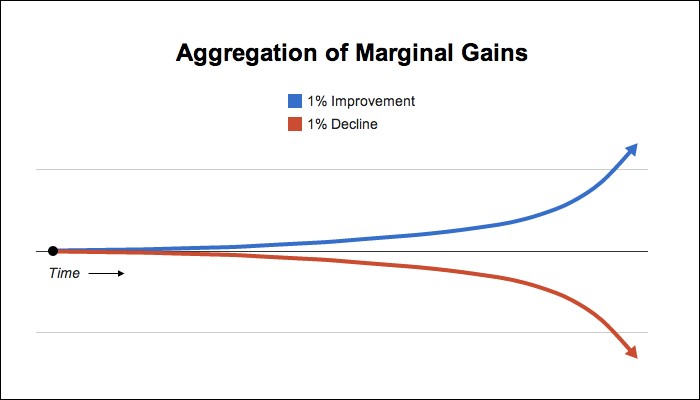
I have been in sales nearly my whole life. As a kid during the summer, my friends and I sold lemonade, snow cones, or our old toys from a stand in the neighborhood. From the ages of twelve to fifteen, I rented a table at comic book conventions to buy and sell to other collectors. At the age of sixteen, I had to sell myself in a job interview. When I graduated from college with a degree in physical therapy, I “sold” patients on my ability to assist them in recovering from a variety of physical ailments. To ensure the most optimal outcome, I needed them to “buy” into how important it was for them to be actively involved in their own recovery process. As I moved into formal management and leadership positions, my sales challenge progressed. I was charged with getting my teams or clients to buy into the vision or direction I was “selling.” And, as a business owner, I’ve sold my company’s services to prospects.
Yes, I’ve been selling a long time. That’s what got me excited about a recent Harvard Business Review article by Rebecca Knight titled “How to Improve Your Sales Skills, Even If You’re Not a Salesperson.”1 In it, she quotes Thomas Steenburgh, professor at the University of Virginia Darden School of Business, who states, “Selling is moving somebody else to action.” As managers and leaders, that’s what we do every day. Ms. Knight then proceeds to provide fantastic advice regarding how to think about sales and make oneself more comfortable with the thought of selling.
Although Ms. Knight’s article was focused on actual sales, I viewed it from the aspect of managing and leading people. The principles are the same. Effectively selling your team or clients on your vision and implementation strategy requires the same four tools Ms. Knight identifies as those required to effectively sell products or services.
Reflect. Look back on the great leaders you’ve worked with in your career. How did they inspire you or your team to achieve more? I always say, management is getting people to do what they are supposed to do, but leadership is helping them achieve more than they thought they could. I had a boss who was great at providing what I needed. He broke down bureaucratic obstacles in the organization that kept me from being successful. Once he paved a path for me, I understood he expected me to deliver results. I’ve tried to adopt a similar leadership style.
On the flip side, reflecting back to poor leaders allows us to learn what not to do as well as what types of behaviors to avoid. I had another boss who was ruthless. She actively sought out weaknesses. The more vulnerable the victim the better, especially if that person reported directly to one of her subordinates. My takeaway from that experience was to make sure my team members were always prepared. Furthermore, I made it clear I would always stand with them.
Put yourself in your counterpart’s shoes. I appreciate the old saying, “To truly know someone, you need to walk a mile in their shoes.” Empathy is the action of understanding, being aware of, being sensitive to, and vicariously experiencing the feelings and thoughts of another. A leader may be able to fake empathy once or twice. However, the people you are leading will quickly identify whether you are truly empathetic or just paying them lip service.
Understand what motivates your group. Tie the motivations of individuals to your vision to accomplish your goals. I once worked for a senior VP who desperately wanted to expand his territory. He asked what my goals were. I told him I wanted to become an area manager. He replied with, “Then build an area.” He proceeded to provide me the resources, encouragement, and, when necessary, the interference, to build an area. The result was both visions were realized.
Plan, prepare, and practice. You only have one chance to make a first impression. If you’re trying to sell your team on a shared vision for success, obtain buy-in by preparing an initial “pitch” to get them on board. Not being successful the first time doesn’t doom the plan or idea for the future. However, being ill-prepared during the initial roll-out seriously reduces the chance of success going forward.
- Plan: Identify objections you may encounter ahead of time. Know the people you are preparing to lead or motivate.
- Prepare: Know your facts. Understand your data. Do your research.
- Practice: Find a friend or family member with whom to practice your presentation. Or, at the very least, pitch it to yourself in front of a mirror.
Stay calm and don’t brag. Staying calm is especially important if you don’t receive the response you expected. If there is resistance to your plan when initially presenting it to your team, keep your wits about you. You may find additional research is required. Sometimes, you need to work through the plan with your team gradually. Generally speaking, losing your temper or panicking will make things worse.
Bragging or making the project or vision about you is a sure path to difficulty. I have seen managers try to motivate staff or physicians to get behind a vision but these individuals were so ego-centric it was clear to their audience the plan was really about the manager, not the team. Generally, “me” based managers fail.
Again Ms. Knight quotes Thomas Steenburgh, “Very few parents say they want their kids to grow up to be a salesperson.” If these parents truly understood the versatility of the sales skill set, they would appreciate that a sales career can prepare their kids for a life of leadership.
Robert Carrera, President/CEO
1 https://hbr.org/2017/05/how-to-improve-your-sales-skills-even-if-youre-not-a-salesperson











